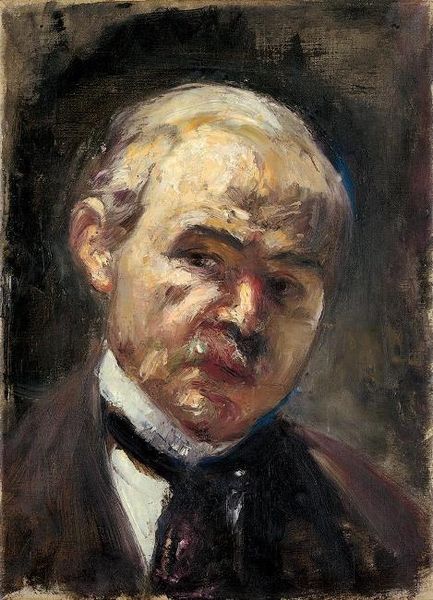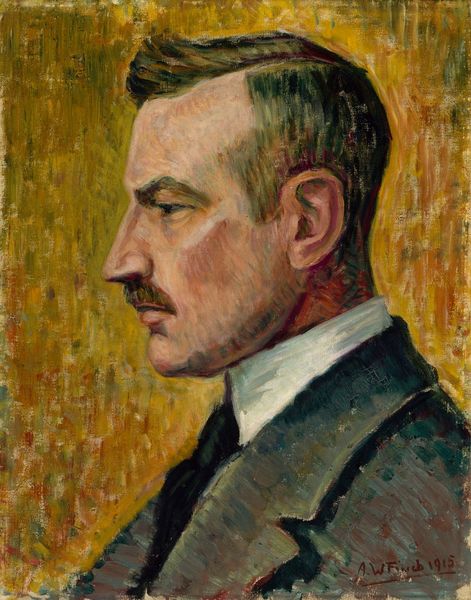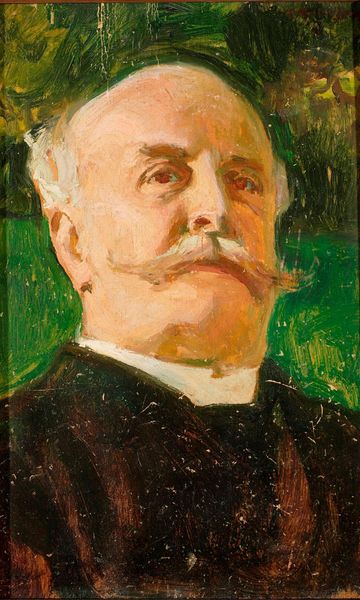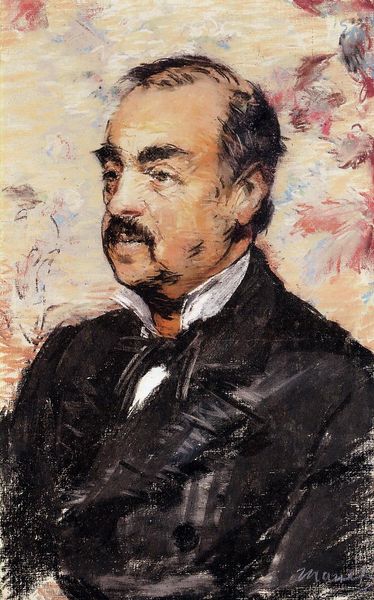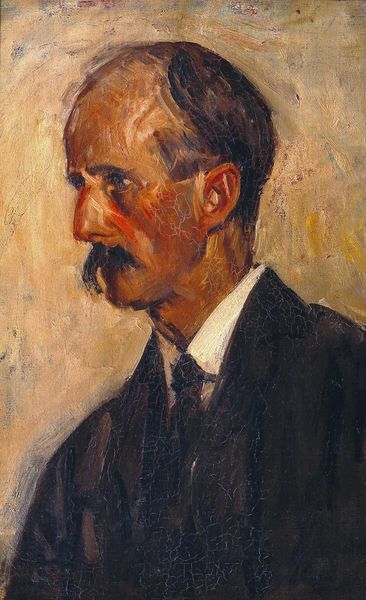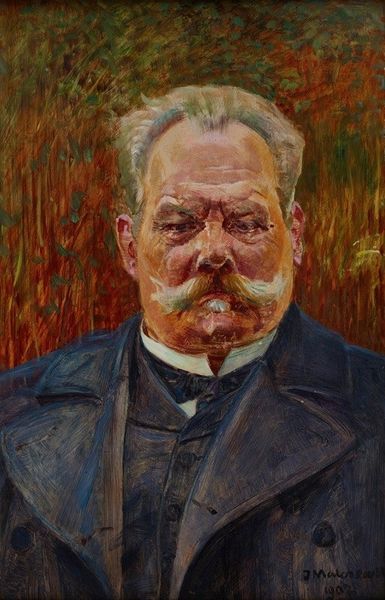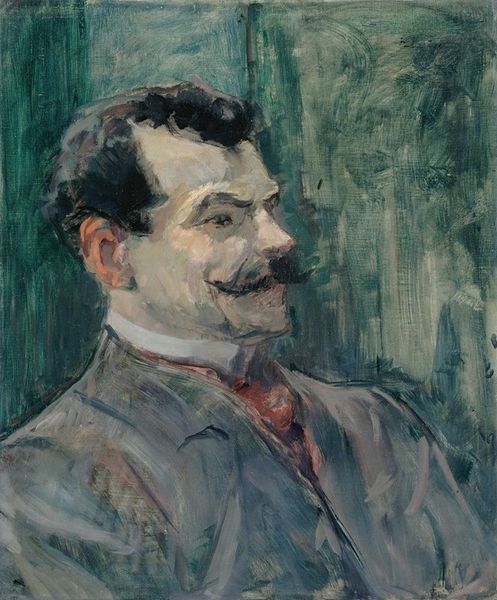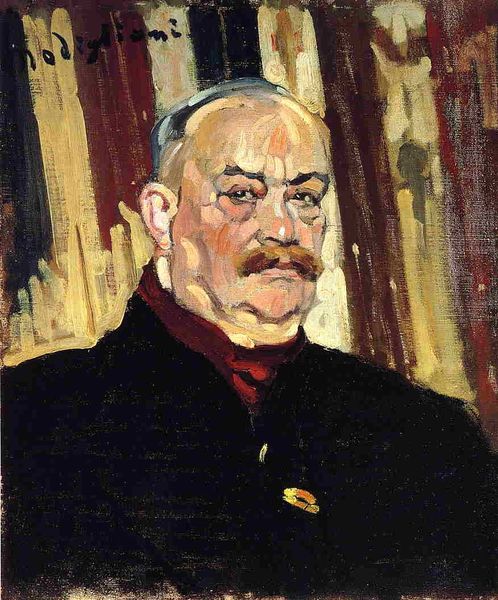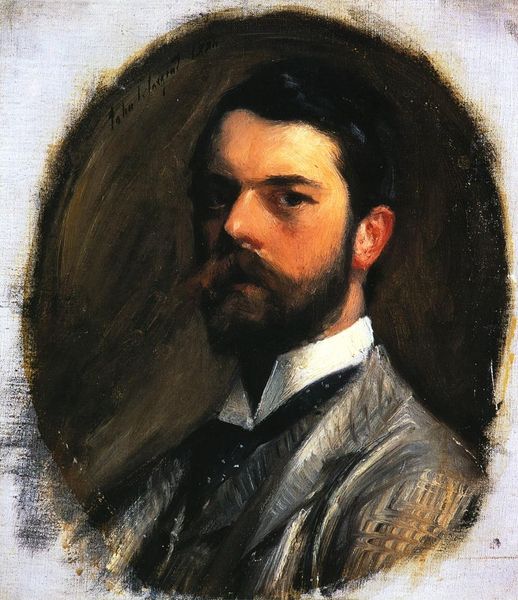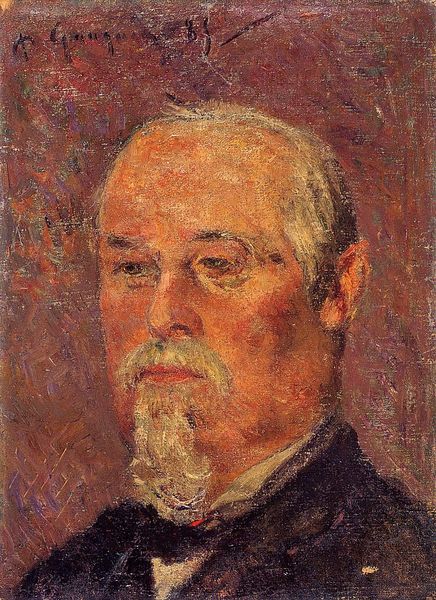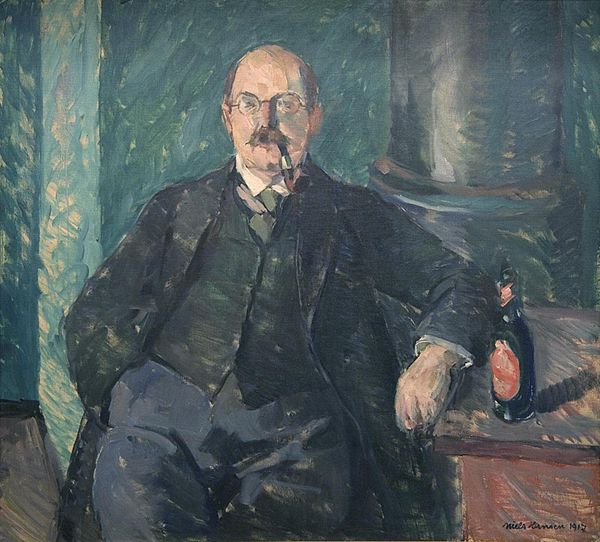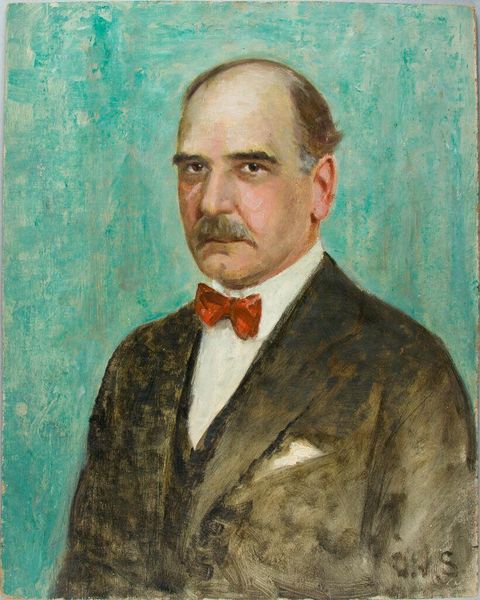
painting, oil-paint
#
portrait
#
painting
#
oil-paint
#
oil painting
#
expressionism
#
modernism
Copyright: Public domain
Curator: Here we have Egon Schiele's oil painting, "Portrait of Leopold Czihaczek (Head of a Bearded Man I)," created in 1907. It resides in a private collection. The brushstrokes seem thick. Editor: The subject has a striking gaze. It makes you wonder what thoughts lie beneath that imposing expression. There is something unsettling about how he seems to assess you. Curator: Considering Schiele’s broader body of work, these early portraits are crucial for understanding the societal currents impacting his artistic development. Look at the deliberate depiction of the man's features, it speaks to more than just likeness. Schiele, despite his later transgressive work, grapples here with representation expected of portraiture at the time. Editor: There is this conflict that comes across—this need to represent and also this hint that there is an expressionistic interpretation pushing to the surface. I'd be interested to learn about Czihaczek himself. The mustache is remarkable, an obvious symbol of status. I am sure he must have represented something in society. Curator: You’ve hit on a fascinating point! The facial hair becomes almost emblematic, a visual shorthand for a certain societal class and expectation. I would propose the stern brow suggests the weight of duty. Editor: Yes, the brow is intense, the weight is a sense of stoicism, but is this necessarily how Czihaczek viewed himself, or is this Schiele's commentary? I can't ignore that Schiele rendered the skin tones and textures with such visceral immediacy— almost rough at some points. What could this reflect about their relationship? Curator: Indeed, it prompts a larger reflection on power dynamics in portraiture itself. Was this a patron? A study subject? The slightly elevated perspective subtly places the viewer in a subordinate position. Editor: Food for thought about art's power, who is represented, and how that image impacts viewers across time. Curator: Precisely. A single portrait opens a gateway into the complexities of the individual and his context, the social pressures present, and the hand of the artist—rendering judgment in perpetuity.
Comments
No comments
Be the first to comment and join the conversation on the ultimate creative platform.
